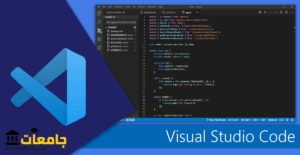What is programming? Programming is a skill that has quickly taken the world by storm. It plays an essential role in everything we do on a daily basis. But what exactly is programming? What is its use? Why should you learn programming?
In this article, we will discuss the definition and what programming is, in addition to discussing the basics and most important languages.
What is programming?
Programming is the process of designing and constructing a set of executable instructions to perform a specific task on a computer to achieve a desired result. It includes tasks such as analysis, creating algorithms, evaluating their accuracy, and implementing the algorithms in a chosen programming language. In addition to coding, the programming process includes testing, debugging, maintaining source code, and implementing building systems.
It is the process of performing a computation using an executable program. Coding is a process that involves algorithm analysis, generation, profiling, and implementation. The ultimate goal of computer programming is to create anything, be it a website, a program, or a simple image. Computer programming can be described as a combination of art and science; it is technical and analytical, but also creative.
Programming Basics
When we talk about programming, we're talking about how people communicate with computers. Programming, also referred to as computer programming, is the way software developers tell a computer what they want it to do. When writing code, developers give a set of instructions to a computer, and these instructions are called "code." This means that programming is simply the art of writing lines of code.
The ability to communicate clearly with a computer is an incredibly valuable skill, as the same code is used in virtually all of the world's communication devices. Without programming, the many new ways we talk to each other simply wouldn't exist—it's that important!
Just as every letter and number matters when you write an email to another person, every letter or number a developer uses when writing lines of code will affect how a computer interprets those instructions. Programmers, also known as web developers, software engineers, coders, and more, use their coding skills to create a variety of technologies such as websites, applications, operating systems, video games, robots, and almost anything else imaginable. All of these ideas come from code, which is easy to learn, starting with understanding how it works.
Check out: 5 websites to learn programming and software for free
How does programming work?
Now that you know what programming is, let's talk about how it works. You've probably heard of something called binary code before. Binary code is a long string of ones and zeros that you've probably seen in science fiction movies. Although the vast majority of programmers never write binary directly, it is fundamental to the way a computer receives its instructions.
Ultimately, a computer is just a machine, and machines are literals. This means that a computer will do exactly what the code tells it to do. Think of a light bulb—it will only light up when the switch is turned on. Flipping the switch is a simple instruction, with no room for interpretation. Although computers are more complex than light bulbs, they operate on the same principle.
The device that makes up a computer can never be turned off or on, just like a light bulb. Instead of a single light bulb, a computer is made up of billions of tiny transistors, each of which can be switched from off to on and back again. When the combination of transistors changes, the computer behaves differently. Instead of turning these transistors off or on with a light switch, we can write a set of instructions to tell the computer what to do.
In the old days, when computers were made with far fewer transistors, binary was the only coding system available. If we thought of each transistor as a single digit, where 1 meant “on” and 0 meant “off,” a series of 1s and 0s could be combined to tell each transistor what to do. As computers became increasingly complex, it became increasingly difficult for programmers to manage increasingly long and complex instructions using only 1s and 0s.
This is where programming languages come into play.

What are programming languages?
A programming language is a computer language used by programmers to direct the operation of a computer, application, or program. It is written in a specialized language for a specific purpose. There are many programming languages used to create computer programs. The most in-demand languages are listed below.
Java is a high-level, general-purpose, object-oriented programming language. It is used to develop standalone, enterprise, mobile, and web applications. Without recompilation, Java code can be executed on any platform that supports this programming language.
Python is a general-purpose, high-level programming language that provides code readability with extensive indentation. It supports multiple programming paradigms.
C is a programming language used in device drivers, operating systems, and protocol stacks. However, the use of C is declining due to its inefficiency.
C++ is a general-purpose, high-level programming language used in a wide variety of applications and programs. In addition to its functional and object-oriented features, it supports low-level memory manipulation.
Assembly language Assembly Language It is a low-level programming language that communicates directly with computers. There is a strong correlation between machine code instructions and language commands. This language is designed for human understanding.
JavaScript is one of the most important programming languages on the web. It is a high-level, just-in-time compiled language that adheres to the ECMAScript specification. It features dynamic typing, first-class functions, and object orientation based on prototypes.
PHP is an open-source, general-purpose scripting language used by programmers for web development. It consists of HTML with embedded code. It is implemented in a programming language as part of the process. In addition to testing, debugging, updating the source code, and setting up build procedures, the programming process also includes testing.
When we refer to “what is programming,” we are referring to the implementation of an executable program to achieve a desired result. Coding is the analysis, development, classification, and implementation of an algorithm. Coding can produce anything from an entire website to a piece of software to a single graphic. Programming blends the technical, analytical, and imaginative elements of both the arts and sciences.
Programming language
While computers may operate on a binary system, programming languages, or coding, are what programmers use to translate the ones and zeros into messages that humans can understand. Once presented, the information is written into a set of instructions for machines to execute. It's a symbiotic relationship that bridges the gap between humans and machines.
So, instead of having to decipher programming instructions written in long sequences of 0s and 1s, imagine being able to write those same instructions using words that both you and the computer understand. That's exactly what a programming language is.
So what is programming in numbers? Programmers no longer need to remember that 00100010 01101000 01100101 01101100 01101100 01101111 00101100 00100000 01110111 01101111 01110010 01101100 01100100 00100001 00100010 is the set of instructions needed to write the phrase “Hello, world!” Instead, they can simply type these words and they will appear. Be sure to thank the countless programmers who came before us for developing programming languages to make our lives easier.
When you first embark on your path to becoming a programming star, you'll be presented with countless optional programming languages to learn. And there are a lot of them.
First, let's think of this in terms of cooking. In this scenario, you (the programmer) are passing the original recipe (the code) to a relative. If you wanted to, you could figure out how to send that recipe to your relative using Morse code (binary), but why not make your life easier and write out the instructions one sentence at a time (the lines of code). Once your relative (the computer) has the recipe, they must follow the set of instructions you provided to create the final dish. The more complex the recipe, the more complex the dinner.
Programming languages bridge the gap between computers and humans. For every app and website you've ever visited, there are dozens of programmers who wrote the code to get a computer to create it for you. Just as there are hundreds of different spoken languages in the world, there are hundreds of different programming languages that programmers have developed over time. Here's a list of some. Programming languages Most used today.
- JavaScript
- Python
- SQL
- Java
- Typescript
- C #
- BHP
- C
- He goes
- Kotlin
- rust
- Ruby
- Share
Different programming levels
All programming languages are divided into two categories: high-level and low-level.
High-level programming languages, such as those mentioned above, are more in line with human speech. You'll find high-level languages using keywords for everyday operations such as sort, run, order, etc. The biggest benefit of high-level languages is that they are easier for programmers to read and write, but the biggest downside is that they take a bit longer for a computer to interpret.
Low-level programming languages, such as machine code or assembly language, are easy for computers to understand, but they are almost unrecognizable as human language. This means that these languages are more difficult for humans to program, but they perform much faster than high-level languages.
Programming languages are diverse and used in a variety of ways. You don't need to know every language to become a developer—all you need is one. The more familiar you become with them, the easier it becomes to learn a new language each time.
History of programming languages
The history of programming languages dates back to the early 19th century. Here's a timeline of the history of programming languages that will help you understand how computer programming rapidly evolved from machine code to human-readable code.
| year | Programming language |
|---|---|
| 1843 | Ada Lovelace created the first automatic algorithm, developed for Charles Babbage's difference engine. Many modern programming languages have their roots in the language. |
| 1944-45 | Konrad Züs developed the first "real" programming language known as Plankalkül (Plan Calculus). |
| 1949 | Using assembly language in the Electronic Delay Storage Automatic Calculator (EDSAC). |
| 1949 | John McCauley proposes Shortcode (or Shortcode), the first high-level language (HLL). |
| 1952 | Autocode was a term used for a family of programming languages. It was the first compiled language to be implemented. |
| 1957 | John Backus created FORMULAT TRANslation, or FORTRAN. |
| 1958 | ALGOL (Algorithmic Logical Language) was created by a joint committee of American and European computer scientists. |
| 1959 | COBOL was created by Dr. Grace Murray Hopper as a programming language that could run on all brands and types of computers. |
| 1959 | LISP was developed by John McCarthy of MIT. |
| 1964 | BASIC (Beginner's All-Purpose Symbolic Instruction Code) was created by John G. Kemeny and Thomas E. Kurtz at Dartmouth College to enable students without a strong technical or mathematical understanding to use computers. |
| 1970 | Pascal was developed by Niklaus Wirth. |
| 1972 | Smalltalk was created by Alan Kay, Adele Goldberg, and Dan Ingalls at the Xerox Palo Alto Research Center. |
| 1972 | C was developed by Dennis Ritchie at Bell Labs. It is considered the first high-level language. |
| 1972 | SQL was developed by Donald D. Chamberlain and Raymond F. Boyce at IBM. |
| 1978 | MATLAB (Matrix Lab) was developed by Cleve Moler. |
| 1983 | Objective-C was developed by Brad Cox and Tom Love. |
| 1983 | C++, an extension of the C language, was created by Bjarne Stroustrup. |
| 1987 | Perl was created by Larry Wall as a scripting language. |
| 1990 | Haskell was developed by Brooks Curry. |
| 1991 | Python was created by Guido Van Rossum. |
| 1991 | Visual Basic was developed by Microsoft. |
| 1993 | Designed by Ross Ihaka and Robert Gentleman at the University of Auckland, New Zealand, it is widely used to perform various types of Data analysis . |
| 1995 | Java is developed by Sun Microsystems. |
| 1995 | Rasmus Lerdorf creates PHP. It is widely used for building websites and blogs. |
| 1995 | Ruby was developed by Yukihiro “Matz” Matsumoto. |
| 1995 | JavaScript was developed by Brendan Eich. Many popular websites use JavaScript. |
| 2000 | C# was created by Microsoft to combine the computing power of C++ with the simplicity of Visual Basic. |
| 2003 | Scala was developed by Martin Odersky. It is compatible with Java and useful for Android development. |
| 2003 | Groovy was developed by James Strachan and Bob McWhirter. It is derived from Java, easy to learn, and concise. |
| 2009 | Go was created by Google to overcome challenges that can occur in large software systems. |
| 2014 | Swift was designed by Apple to replace C, C++, and Objective-C. It's easier to use and more versatile. |
Why should Learn programming؟
We live in the golden age of technology. It's no secret that technology plays a fundamental role in a vast number of industries around the world. From children to the elderly, coding is a skill that's easy to learn—and easy to do well.
Here are some reasons why writing code and learning programming is a useful and exciting skill to learn:
growing job market
Software development jobs are on the rise with no signs of slowing down. With an abundance of opportunities, those seeking a career change or simply looking to advance within a company have the opportunity to take advantage of new projects. The job market for programming enthusiasts is expanding every day.
Be a better problem solver
The essence of programming is problem-solving. Programming is essentially the process of examining the bigger picture and breaking it down into smaller, more digestible parts (like a chef would) until it becomes a single, solvable task. Learning to code brings a new perspective on how to approach situations—whether they involve technology or not.
Combine technical skills with creativity.
On the surface, people might think of programming as just a bunch of letters and numbers squashed together to create a website. They couldn't be more wrong. Coding allows you to combine your creative side and technical skills and create something truly unique. In the life of a computer programmer, no two days are the same.
Do it for fun
Coding doesn't have to be anything more than a hobby. Many people use programming as a fun way to showcase their technical skills in their free time. You could start a blog about kayaking in the ocean, develop a website to post photos of your pets, or create your own video game. With programming, the fun never ends.
Become your own boss
The idea of being your own boss is appealing to many. Learning to code can turn a hobby into a side hustle and eventually, your own business. You're free to create an e-commerce site where you sell your pottery, create a news site in your hometown, offer programming lessons, or start your own web design agency. Your hours (and rates) are up to you.
Frequently Asked Questions
What is programming?
The term "programming" refers to the process of writing code that instructs a computer how to perform a specific task. It's possible to use languages such as JavaScript, Python, and C++ to write code.
Is programming difficult?
Programming is often viewed as one of the most challenging fields in existence. It's easy to see why some individuals have trouble learning how to code, given its lack of similarity to traditional types of education, such as computer science degrees.
Do we need mathematics in programming?
While fields like game programming and machine learning require a strong coding background, most developers won't need to hone their computational or mathematical abilities.
Does programming have a future in the job market?
There is a high demand for programming skills worldwide. Universities train a large pool of computer programmers to meet this need. The amount of money you can earn as a computer programmer depends on your level of experience, the programming languages you know, and the types of programs you can create.










